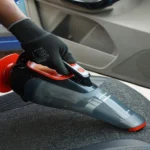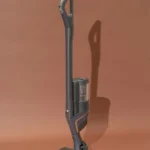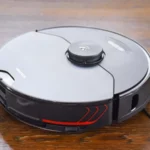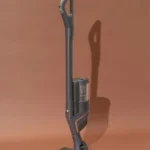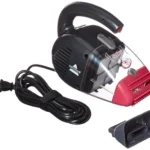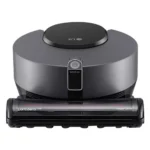Are you tired of lugging around a heavy vacuum cleaner? Do you want something more convenient for small messes and quick clean-ups? Look no further than handheld and stick vacuum cleaners. But which one should you choose? Both have their pros and cons, and there are several factors to consider before making a decision. In this article, we’ll take a deep dive into the features of handheld vs. stick vacuums, their usage scenarios, battery life, dustbin capacity, accessories, noise level, filtration system, weight and reach, price range, and even make some brand comparisons. So, let’s explore the world of compact vacuums and discover which one will work best for you.
Handheld Vacuums
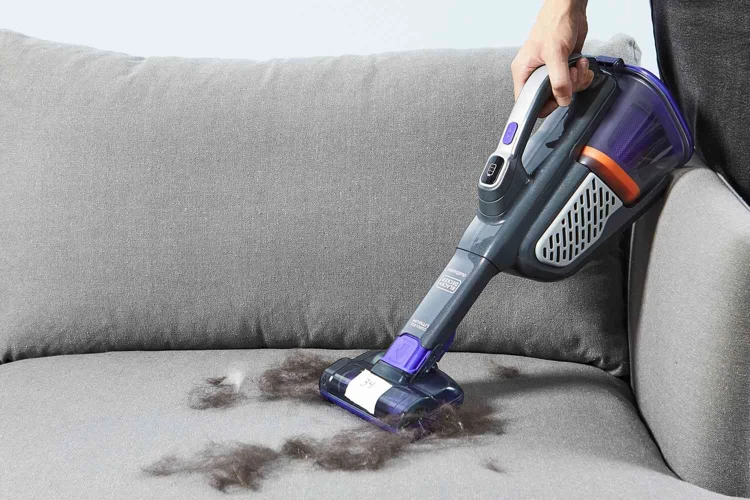
When it comes to cleaning those hard-to-reach spaces or quick clean-ups around the house, a handheld vacuum can be a game-changer. With their lightweight and compact design, these miniature cleaning tools offer convenience and mobility that traditional vacuums simply can’t match. Whether you’re looking for a vacuum to clean up pet hair or for use in your car, a handheld vacuum can be an efficient and effective solution. To learn more about the benefits and features of handheld vacuums, check out our handheld vacuum buying guide.
Pros
When it comes to handheld vacuums, there are several advantages that make them a great option for specific cleaning tasks. Let’s take a closer look at some of the pros of using a handheld vacuum:
| Pros |
|---|
| Portability: One of the biggest advantages of a handheld vacuum is its portability. These devices are small, lightweight, and easy to maneuver, making them a great option for quick cleanups or hard-to-reach areas. |
| Versatility: Handheld vacuums are available with a variety of attachments and accessories, which makes them a versatile tool for a wide range of cleaning tasks. From crevice tools to pet hair attachments, there is a handheld vacuum for every type of cleaning. |
| Great for small spaces: Handheld vacuums are especially useful for cleaning small spaces like cars, stairs, and upholstery. Their small size makes it easy to clean hard-to-reach areas without lugging a bulky vacuum around. |
| Easy to store: These devices are small enough to fit in a closet or cabinet, making them easy to store when not in use. They’re also a great option for people who live in small apartments or homes with limited storage space. |
| Quick and easy: Handheld vacuums are perfect for quick cleanups and spills. Since they’re so easy to use and maneuver, you can grab them and start cleaning in seconds. |
If you’re interested in learning more about handheld vacuums, check out our article on the top 10 handheld vacuums for small spaces or read up on the benefits of using a handheld vacuum in your car.
Cons
When it comes to handheld vacuums, there are a few downsides that are worth considering before making a purchase. Let’s take a look at some of the cons of using a handheld vacuum cleaner:
| Cons | |
| Inconsistent suction power: | Due to their small size, handheld vacuums tend to have a less powerful suction compared to their larger counterparts, making it difficult to clean tough dirt and debris. |
| Small dustbin capacity: | Because of their compact design, handheld vacuum cleaners generally have a smaller dustbin capacity, requiring frequent emptying during use. |
| Short battery life: | Most handheld vacuums have a limited battery life, ranging from 20 to 30 minutes of continuous use. This can be a challenge when cleaning larger spaces or areas that require more effort. |
| May not be suitable for all surfaces: | While handheld vacuums can be used on most surfaces, they may not be suitable for cleaning large carpets or floors, which require a full-sized vacuum. |
| May not have necessary attachments: | Some handheld vacuums may not come with all the necessary attachments for cleaning specific areas, such as crevices, upholstery or pet hair. This may require additional purchases to make the vacuum more versatile. |
Despite these cons, handheld vacuums are widely popular due to their convenience and portability. If you’re considering investing in a handheld vacuum, make sure to read our article on how to choose handheld vacuum attachments to get the most out of your new purchase.
Stick Vacuums
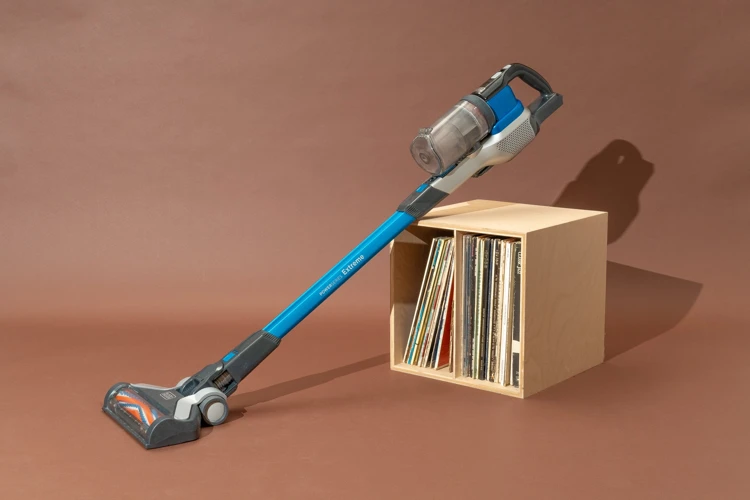
For those who are looking for a versatile and convenient cleaning solution, stick vacuums can be an excellent choice. These slim and lightweight machines offer easy maneuverability and a range of features that make cleaning a breeze. Unlike their handheld counterparts, stick vacuums are designed to handle larger areas and offer a more thorough cleaning experience. In this section, we’ll explore the pros and cons of stick vacuums and what features to consider when choosing one. If you’re interested in learning about handheld vacuums, check out our article on 5 reasons to choose a handheld vacuum cleaner.
Pros
Handheld vacuums are a popular choice for quick and easy cleaning around the house. They offer many benefits that make them an excellent choice for certain scenarios. Here are some of the pros of handheld vacuums:
- Portability: One of the most significant advantages of handheld vacuums is their portability. They are lightweight and compact, making them easy to carry around and use in tight spaces. They are perfect for cleaning small messes or hard-to-reach areas like stairs and corners. Handheld vacuums are also ideal for car cleaning and quick cleanups on the go.
- Easy to use: Handheld vacuums are user-friendly and require minimal setup. They are perfect for people who don’t want to spend a lot of time or effort cleaning. They are also an excellent choice for the elderly or those with limited mobility as they are easy to maneuver.
- Effective for pet hair: If you have pets at home, then you know that pet hair can be a challenge to remove. However, handheld vacuums are designed to clean pet hair effectively. They come with specialized tools like motorized brush heads that can remove pet hair from upholstery and carpets quickly.
- Easier to maintain: Handheld vacuums are easier to maintain than other types of vacuums. They have smaller dustbins that can be emptied and cleaned easily. They don’t require a lot of space for storage, making them perfect for apartments or small homes. You can also check out our tips on how to clean and maintain a handheld vacuum.
Handheld vacuums are an excellent choice if you are looking for a portable, easy-to-use, and effective vacuum cleaner. They are perfect for quick cleanups, car cleaning, and hard-to-reach areas. If you have pets at home, then a handheld vacuum with specialized tools is a must-have. If you are wondering which handheld vacuum is best for pet hair, check out our top picks for handheld vacuums for pet hair.
Cons
When it comes to the cons of handheld vacuum cleaners, there are few points to consider before making a purchase.
Firstly, handheld vacuums are not suitable for deep cleaning tasks, such as vacuuming a large carpeted room or cleaning heavy dirt and debris. This is because most handheld vacuums come with a weak motor and smaller cleaning heads, which makes them less effective in deep cleaning.
Secondly, the battery life of handheld vacuums may be a disadvantage for some people. Most handheld vacuums come with a battery life of 20-30 minutes, which may not be sufficient enough to clean larger spaces, or larger messes.
Thirdly, the dustbin capacity of handheld vacuums is also a limitation. Due to their compact size, handheld vacuums come with smaller dustbins which require frequent emptying.
Fourthly, handheld vacuums might cause noise pollution because they have a small motor that needs to work efficiently in such an enclosed space, which tends to make them a bit louder than bigger types of vacuums.
Lastly, some handheld vacuums might not come equipped with the accessories required to tackle a wide range of cleaning tasks, such as crevice tools, pet hair tools, and upholstery tools. To find out which accessories come with a handheld vacuum, it is important to check the manufacturer’s specifications before making a purchase.
To avoid confusion about which type of vacuum to choose, it is important to understand the purpose and limitations of each type. Understanding the history of handheld vacuum cleaners, tips and tricks for cleaning hardwoods, and the right attachments to use, can go a long way in helping you make the right choice.
Features to Consider
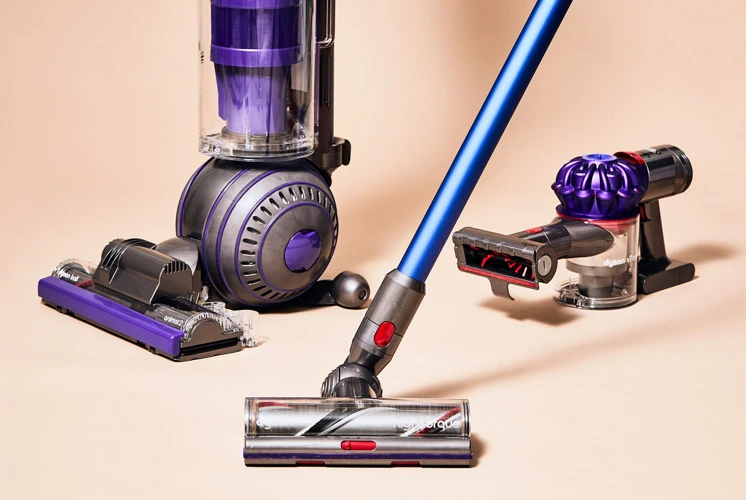
When choosing between a handheld vacuum and a stick vacuum, there are several important features to consider that will help you decide which type of vacuum cleaner is right for you. The size and weight of a vacuum is a critical feature to consider because it will impact how easy it is to use and maneuver. Handheld vacuums are typically lightweight and easy to carry around with you, while stick vacuums are generally larger and heavier. Keep in mind the intended use case for your vacuum; if you need something to quickly clean up small messes, a handheld model may be a better fit, while a stick vacuum may be better for larger cleaning projects.
Another feature to consider is the battery life. Handheld vacuums may have a shorter battery life than stick vacuums, which can make them less convenient for tackling larger cleaning jobs. Additionally, handheld vacuums typically do not have the same amount of suction power as stick vacuums, which can limit their cleaning capabilities.
The dustbin capacity of a vacuum is another important feature to consider. Handheld vacuums often have smaller dustbins, which means they need to be emptied more frequently. Stick vacuums tend to have larger dustbins, which means you can clean more without needing to stop and empty the bin. This can be especially important if you have a larger home or a lot of ground to cover.
If you’re concerned about accessories and attachments, you’ll find that both handheld and stick vacuums come with a variety of tools to help you clean more effectively. Some common attachments for handheld vacuums include crevice tools and upholstery tools, while stick vacuums may come with specialized brushes for different floor types. If you’re looking for a vacuum that can tackle a range of surfaces, make sure you choose one with the right attachments for your needs.
Consider the noise level of your vacuum cleaner as well. While both handheld and stick vacuums tend to be quieter than traditional upright vacuums, there can still be variation in the amount of noise they produce. If you have small children or pets, you may want to choose a vacuum with a quieter motor.
The filtration system is another key feature to consider. Some vacuums come with high-efficiency filters that are designed to trap allergens and other small particles, which can be especially important if you or a family member suffers from allergies or asthma. Handheld vacuums may have less effective filtration systems than their stick counterparts.
Of course, price range is always an important consideration when purchasing any household appliance. Handheld vacuums tend to be less expensive than stick vacuums, though this can vary based on the features and attachments included. Stick vacuums can be a more significant investment, but they typically offer more powerful suction and greater versatility.
Finally, consider the brand comparison. When deciding between a handheld and a stick vacuum, it can be helpful to compare products from different manufacturers. Some popular brands to consider include Dyson, Shark, and Bissell, each with their own strengths and weaknesses. Take the time to do some research and read reviews to find the product that is right for you, based on the features that matter most.
When choosing between a handheld vacuum and a stick vacuum, it’s important to consider a variety of factors, including size and weight, battery life, dustbin capacity, accessories, noise level, filtration system effectiveness, price range, and brand reputation. By weighing these different features, you’ll be able to find a vacuum cleaner that meets your specific cleaning needs and budget.
Usage Scenarios
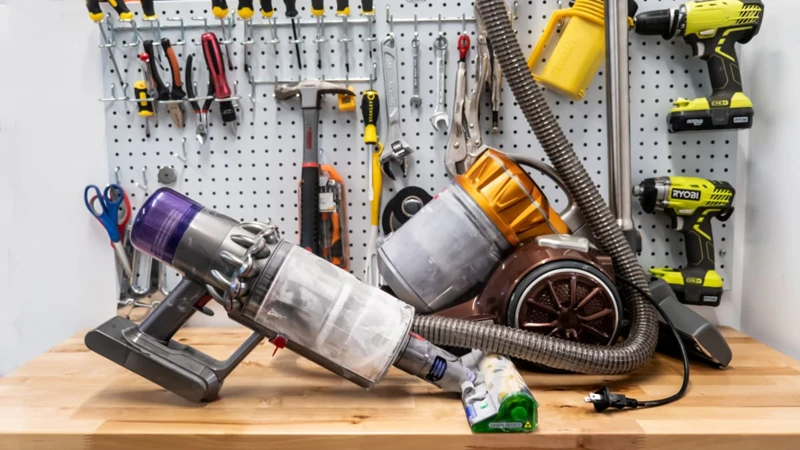
When it comes to choosing between handheld and stick vacuum cleaners, it’s essential to consider your usage scenarios. If you’re mainly looking for a vacuum to handle quick cleanups and small messes, a handheld vacuum cleaner may be the best option for you. Handheld vacuums are lightweight, easy to maneuver, and perfect for cleaning cars, stairs, and furniture. You can also use a handheld vacuum cleaner to clean up messes in hard-to-reach areas, such as tight spaces, between sofa cushions, and under furniture.
On the other hand, if you need a vacuum cleaner that can handle larger cleaning tasks, a stick vacuum cleaner may be a better choice. Stick vacuums are ideal for cleaning larger areas, such as entire floors, and they often come with various attachments that can tackle different surfaces and debris types. Stick vacuums are typically more powerful than handheld vacuums and have longer battery life, making them more suitable for extended cleaning sessions.
It’s worth noting that stick vacuums can also be converted into handheld vacuums, providing you with more flexibility to clean various surfaces and spaces. If you’re not sure which one to choose, it may be worth considering a convertible stick vacuum cleaner.
No matter which type of vacuum cleaner you choose, it’s crucial to consider your specific needs and usage scenarios. Whether you’re dealing with pet hair, hardwood floors, or tight spaces, there’s a vacuum cleaner out there that can meet your needs and make cleaning a breeze. Consider factors such as battery life, dustbin capacity, and accessories to make sure you choose a vacuum cleaner that suits your specific needs.
If you’re interested in learning more about the history of handheld vacuum cleaners, click here. Alternatively, if you’re looking for tips and tricks on using a handheld vacuum cleaner for cleaning hardwood floors, check out our guide here. Finally, if you’re curious about what attachments to use with your handheld vacuum cleaner, head over to our guide on choosing handheld vacuum attachments.
Battery Life
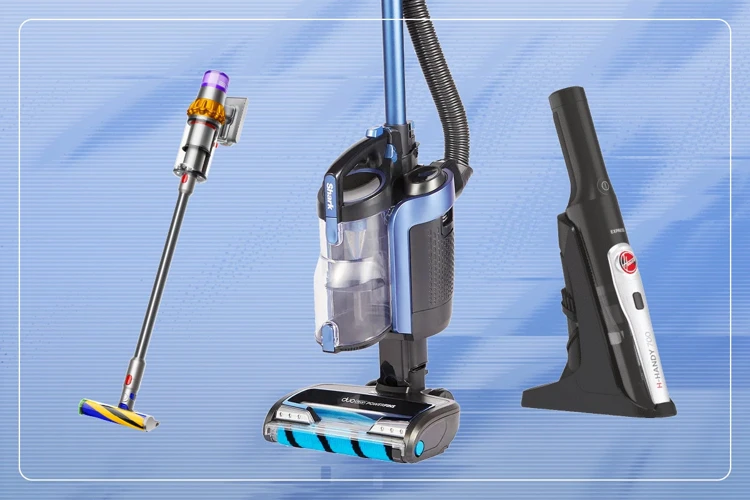
One of the most important factors to consider when choosing between handheld and stick vacuum cleaners is battery life. The battery life of a vacuum can impact its run time and overall usability. Most handheld and stick vacuums are cordless, which means that they need to be charged before use.
When it comes to battery life, stick vacuums typically have an edge over handheld vacuums. Stick vacuums generally have larger battery capacities, which means that they can be used for longer periods of time without needing a recharge. Additionally, many stick vacuums come with removable batteries, allowing you to swap out a dead battery for a fully charged one and continue cleaning without interruption.
However, there are some handheld vacuums that have impressive battery life as well. Some models offer up to 60 minutes of run time on a single charge. However, keep in mind that the run time will decrease as the vacuum’s power increases. This means that you may only get 20-30 minutes of run time with a handheld vacuum on its highest power setting.
It is important to consider your cleaning needs when choosing a vacuum based on battery life. If you have a small home or apartment that needs light cleaning, a handheld vacuum with a shorter battery life may suffice. However, if you have a larger home or need to clean multiple surfaces, a stick vacuum with a longer battery life and removable battery feature may be the better option.
When shopping for vacuums, be sure to check the charger and charging time as well. Some models may take hours to fully charge, which can be inconvenient if you need to use your vacuum frequently. Additionally, if your vacuum comes with a dock or charging station, make sure that you have enough space to store it and charge your vacuum properly.
Battery life is a crucial factor to consider when choosing between handheld and stick vacuum cleaners. Whatever your cleaning needs may be, there are options available with long-lasting batteries and efficient charging capabilities.
Dustbin Capacity
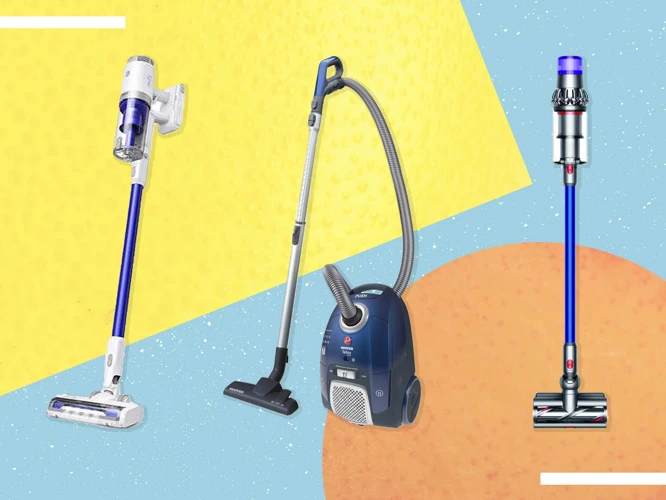
One of the most important factors to consider when choosing between a handheld vacuum and a stick vacuum is the dustbin capacity. The size of the dustbin will dictate how frequently you need to empty it while cleaning.
Handheld Vacuums: Because of their small size, handheld vacuums typically have a smaller dustbin capacity. This means that you’ll need to empty the dustbin more frequently, especially if you’re cleaning up a lot of dirt and debris. However, some newer models come with slightly larger dustbins than older models, which may help to minimize the frequency of emptying.
Stick Vacuums: Stick vacuums tend to have larger dustbins than handheld vacuums. This permits you to clean for a much longer period before emptying the dustbin. You can move around the house without having to worry about stopping and starting to empty out the dustbin. In general, stick vacuums are more suited for bigger cleaning jobs in which a handheld vacuum would need to be emptied multiple times.
When selecting between these two types of vacuums, it is important to consider how often you will use it and what types of dirt and debris you will be cleaning up. Keep in mind that bigger dustbins tend to be more heavy and clumsy, so if you’re primarily using it for small messes or tight spaces then a smaller dustbin might be a better choice. It all comes down to personal preference and the unique requirements of your cleaning tasks.
Other features such as filtration, noise level, accessories and weight and reach should also be taken into account, but dustbin size is an important consideration that can make or break any vacuum cleaner model.
Accessories
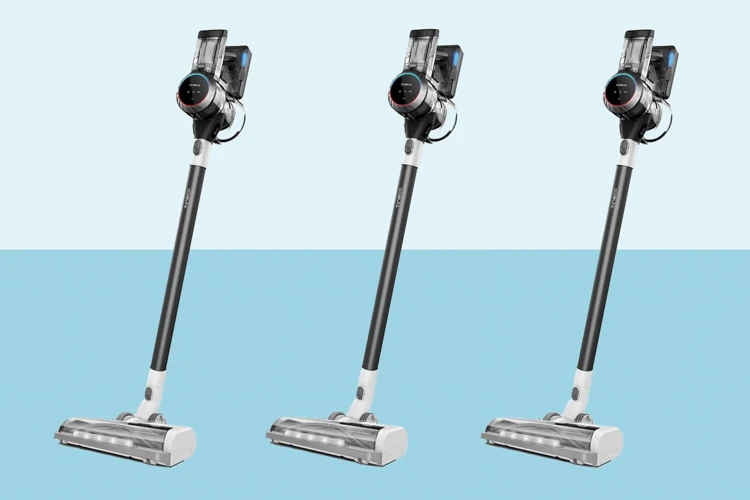
When it comes to accessories, various handheld and stick vacuum cleaners come with different attachments and additional tools to cater to various cleaning needs. Let’s take a closer look at some of the essential accessories that can make cleaning easier and efficient.
Crevices Tool: This accessory comes in hand for cleaning tight spaces such as corners, baseboards, and the gaps between car seats.
Dusting Brush: This attachment comes with soft bristles to help you clean dust and debris from delicate surfaces such as lampshades, curtains, and upholstery.
Pet Hair Tool: If you own pets, this accessory is a must-have. It features rubber bristles that help pick up pet hair and dander from carpets and upholstery.
Extension Wand: This attachment helps extend the reach of your vacuum cleaner to clean higher surfaces such as ceilings, ceiling fans, and top shelves.
Floor Nozzle: A floor nozzle attachment is ideal for cleaning floors, carpets, and rugs. Some models come with adjustable suction settings to cater to different types of flooring.
Upholstery Tool: This accessory is perfect for cleaning furniture such as sofas, chairs, and car seats. It has a soft brush that helps remove dirt, debris, and pet hair from these surfaces.
Carpet Brush: A carpet brush attachment is designed to deep clean carpets and remove stubborn dirt and stains. Some models use motorized brushes to provide better agitation and cleaning performance.
Make sure to choose a vacuum cleaner that offers the right attachments and accessories for your cleaning needs. Some models come with multiple accessories, while others offer a few basic ones. Additionally, consider the ease of attaching and detaching these accessories as well.
Noise Level
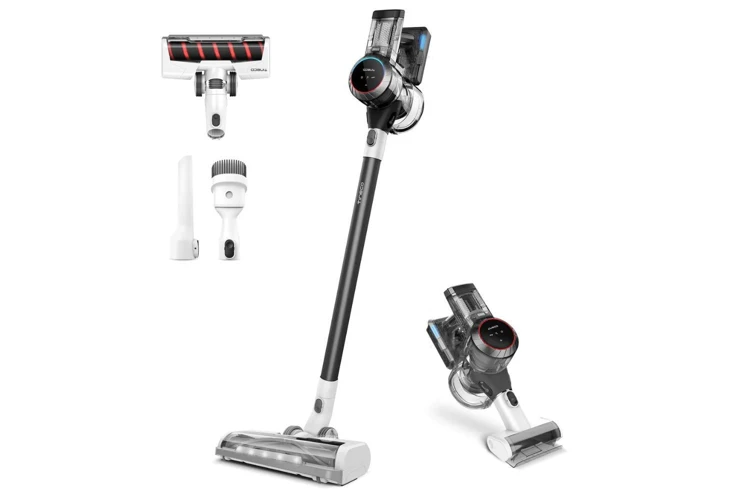
An often overlooked aspect of vacuum cleaners in general is the noise level they produce. Nobody enjoys being near a vacuum cleaner that sounds like a jet engine taking off. Strong noise reduction capabilities are a crucial feature to consider when choosing between handheld and stick vacuum cleaners.
Handheld vacuums generally produce less noise than stick vacuums. They are designed to be small, compact, and lightweight, making them more energy-efficient and less powerful than their stick counterparts. The reduced size and power translate to less noise. However, not all handheld vacuums are created equal, and some models still produce significant noise despite their compactness.
Stick vacuums, on the other hand, are generally more powerful than handheld vacuums, and the extra power can come at the cost of increased noise levels. However, advancements in technology have led to the creation of stick vacuums that are both powerful and relatively quiet. You can find stick vacuum cleaners with silent motors that won’t disrupt your household activities.
Consider getting a handheld vacuum if silence is a top priority, especially if you live in an apartment complex or a small house with thin walls. On the other hand, if you have bigger homes that require more cleaning power, a stick vacuum may be your best bet. Just make sure you don’t compromise the peaceful atmosphere of your home with unnecessary noise. Look out for decibel ratings when researching vacuums to see just how loud they are.
Always remember that a vacuum cleaner’s noise level is an essential factor to consider when making your purchase. It’s not just about the amount of power or cleaning features. You want a comfortable and peaceful cleaning experience that won’t give you or your neighbors a headache. Choose a vacuum cleaner that balances power and low noise levels, and you’ll have a clean and quiet home.
Filtration System
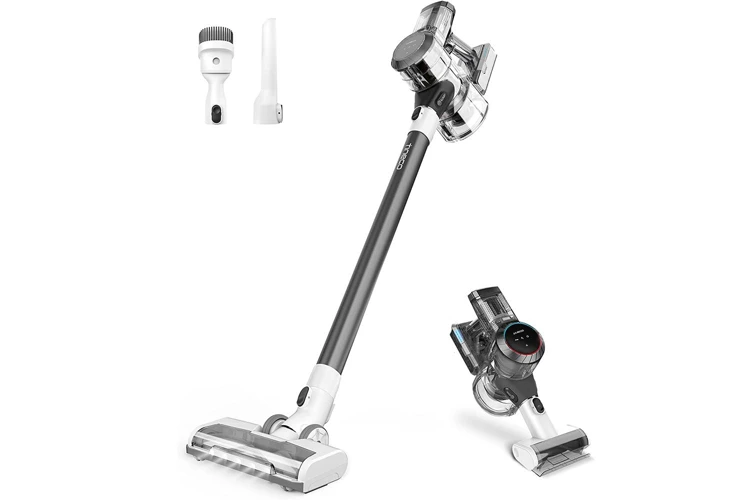
When it comes to choosing between handheld and stick vacuum cleaners, the filtration system is an important factor to consider. A vacuum cleaner’s filtration system is responsible for keeping the air clean and free of dust and allergens, making it essential for homes with pets or allergy sufferers.
Handheld vacuums usually come with basic filtration systems that utilize dust cups or bags to trap dirt and debris. However, some high-end models may have advanced filtration features such as HEPA filters that capture up to 99.97% of particles as small as 0.3 microns, making them ideal for those with allergies or asthma.
On the other hand, stick vacuums often come with more advanced filtration systems, including HEPA filters as standard, due to their larger size and power. Some models even come with special filters that trap allergens and bacteria, ensuring that the air is as clean as possible.
One important thing to note is that a vacuum cleaner’s filtration system needs to be maintained and cleaned regularly to ensure that it’s working correctly. Over time, filters may become clogged with dirt and debris, affecting their performance, so it’s necessary to empty dust cups or replace dust bags as required.
Ultimately, the filtration system you choose will depend on your specific needs and lifestyle requirements. If you have pets or suffer from allergies, then a vacuum cleaner with advanced filtration features such as HEPA filters is essential. However, if you’re looking for a basic vacuum cleaner for occasional use, then a less advanced filtration system may suffice.
Weight and Reach
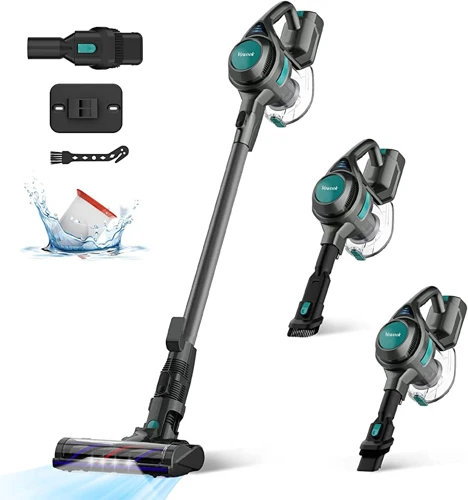
When it comes to choosing between handheld and stick vacuums, weight and reach are two factors that can greatly affect your decision. The weight of a vacuum can determine how easy it is to handle and how much fatigue it may cause during use. The reach of a vacuum can define how much area it can cover without having to move it around.
Weight
Handheld vacuums are generally lightweight and easy to carry around. Weighing between 2 to 5 pounds, these vacuums are great for quick clean-ups and small spaces. However, if you are looking for a vacuum that can handle bigger jobs, a stick vacuum may be a better option. Stick vacuums typically weigh between 5 to 10 pounds, making them slightly heavier but still manageable for most people.
Reach
Stick vacuums usually have longer wands and larger cleaning heads, which means they have longer reach and can cover a larger area without having to move them around. This can be particularly useful for cleaning large rooms or areas that are hard to reach, such as high ceilings. Handheld vacuums, on the other hand, have a limited reach and are designed for cleaning small spaces or tight corners.
When deciding between a handheld and stick vacuum, it is important to consider your specific needs. If you have a small apartment or just need a vacuum for quick clean-ups, a handheld vacuum may be perfect for you. If you have a larger home or need a vacuum for heavy-duty cleaning, a stick vacuum may be the better option. It all depends on how much weight and reach you need for your cleaning tasks.
Weight and reach are important factors to consider when choosing between a handheld and stick vacuum. Both types of vacuums have their advantages and disadvantages, so it’s important to weigh them against your specific needs before making a decision.
Price Range
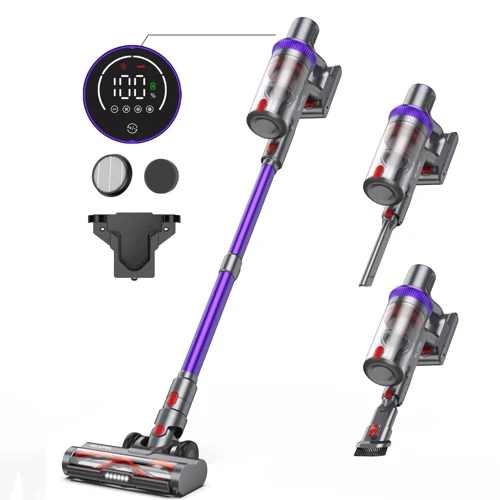
When it comes to choosing between handheld and stick vacuum cleaners, price is undoubtedly an essential factor to consider. While both types of vacuums come in a wide range of prices, the overall cost varies significantly depending on the brand, features, and use case.
Handheld Vacuums: Compared to stick vacuums, handheld vacuums are generally more affordable. Basic models with limited features can cost as little as $20, while high-end models with advanced filtration and motor systems can cost up to $500. However, most users won’t need the expensive options if they primarily use their handheld vacuum for quick cleanups or small messes.
Stick Vacuums: Stick vacuums usually come with better features and more powerful motors than handheld vacuums. But, the added convenience and power often come at a higher price. Basic models of stick vacuums with limited features start around $40 but can cost as much as $1,000 for high-end models from top brands.
Considerations: Price alone should not be the only determining factor when choosing between a handheld and stick vacuum. Features, usage scenarios, battery life, and accessories must be considered in the overall value equation. Keep in mind that a higher price does not always mean better quality or performance. It is essential to research and compare different brands and models to find the best vacuum cleaner that fits within your budget and meets your specific cleaning needs.
While there is a considerable price range for both handheld and stick vacuum cleaners, the overall cost varies depending on various factors. It is crucial to consider the specific features and limitations of each vacuum model before making a purchase decision. Ultimately, the best vacuum cleaner for you will depend on your needs, budget, and usage scenarios.
Brand Comparison
When it comes to choosing between handheld vacuums and stick vacuums, another important factor to consider is the brand. There are many brands available in the market, each with its own unique features, prices, and reputations. Here are some top brands to consider:
Dyson: Dyson is a well-known brand in the vacuum industry, known for their powerful and high-tech vacuums. Their stick vacuums are cordless and equipped with advanced technology, such as cyclonic suction and HEPA filtration. While they come with a higher price tag, they are durable and long-lasting, making them a worthy investment.
Bissell: Bissell is a popular brand that has been in the vacuum industry for over 140 years. They offer a range of handheld and stick vacuums that are affordable and have powerful suction. Additionally, Bissell vacuums are designed with pet owners in mind, with features such as specialized brushes and attachments to remove pet hair.
Shark: Shark is another highly reputable brand that offers a variety of powerful vacuums, including both handheld and stick models. Their vacuums come with features such as powerful suction, swivel steering, and longer battery life. Additionally, Shark vacuums are affordable compared to some other high-end brands.
Hoover: Hoover is a well-established brand that offers a range of powerful and affordable vacuums, including handheld and stick models. Their vacuums are known for their powerful suction and versatile attachments. Additionally, they come with longer battery life, making them ideal for larger cleaning jobs.
Black + Decker: Black + Decker is a well-known brand that offers a range of handheld and stick vacuums that are affordable and effective. Their vacuums come with useful features such as strong suction power and long battery life, making them ideal for quick and easy cleanups.
When choosing a brand, it’s important to consider your own needs and budget. While some brands may be more expensive, they may also come with advanced features and longer shelf life. At the same time, lower-priced brands can also offer powerful and effective cleaning, without breaking the bank. Ultimately, choosing a brand that meets your needs and preferences is vital in selecting the perfect vacuum.
Conclusion
After examining the pros and cons of handheld and stick vacuum cleaners, as well as the important features to consider when purchasing one, it’s clear that both types have their strengths and weaknesses. Ultimately, the decision of which one to choose will depend on your individual needs and cleaning preferences.
If you’re looking for a portable and versatile cleaning solution, a handheld vacuum may be the best option for you. They are great for quick clean-ups, reaching tight spaces, and tackling small messes like pet hair, crumbs, or spills. However, they usually have limited battery life and dustbin capacity, and may not provide enough suction power for deep cleaning.
On the other hand, if you want a more powerful and efficient cleaning performance, a stick vacuum cleaner might be the better choice. They are designed to clean larger spaces, with stronger motors, longer battery life, and larger dustbins. They also often come with useful accessories like crevice tools, brush rolls, and HEPA filters. However, they can be heavier and bulkier, and may not be as easy to maneuver as handhelds.
When choosing between a handheld and a stick vacuum cleaner, consider the purpose and frequency of your cleaning tasks, your budget, and your personal preferences. It’s important to invest in a quality product from a reputable brand, as well as to maintain it properly and regularly clean its filters and brush rolls.
In conclusion, whether you opt for a handheld or a stick vacuum cleaner, make sure it suits your specific needs and meets your expectations for performance, durability, and convenience. A clean home is not only aesthetically pleasing, but also essential for maintaining a healthy and comfortable environment for you and your family.
Frequently Asked Questions
1. Can a handheld vacuum be used on carpets?
Yes, most handheld vacuums have a motorized brush roll that can clean carpets effectively.
2. Are stick vacuums suitable for cleaning stairs?
Yes, stick vacuums are lightweight and slim, and they usually come with attachments that make it easy to clean stairs.
3. How often do I need to empty the dustbin on a handheld vacuum?
It depends on the capacity of the dustbin and how frequently you use the vacuum. You may need to empty it after every use or after several uses.
4. Can I use stick vacuums to clean hardwood floors?
Yes, many stick vacuums have a hard floor setting that won’t scratch the surface or scatter debris around.
5. How long do the batteries in handheld and stick vacuums last?
It varies by model, but most handheld and stick vacuums have a run time of 10 to 30 minutes on a single charge.
6. Do I need to replace the filters in my vacuum?
Yes, most vacuum filters need to be replaced or cleaned periodically to maintain suction power and prevent clogs.
7. Can I use a handheld vacuum to clean my car?
Yes, handheld vacuums are great for cleaning car interiors, as they are compact and versatile.
8. Do stick vacuums work well on pet hair?
Yes, many stick vacuums have powerful suction and brush rolls that can pick up pet hair from carpets and upholstery.
9. What accessories should I look for in a handheld vacuum?
Attachments such as crevice tools, dusting brushes, and pet hair brushes can be helpful for cleaning tight spaces, upholstery, and pet hair.
10. Are there any eco-friendly options for handheld and stick vacuums?
Yes, there are some handheld and stick vacuums that use rechargeable batteries instead of disposable ones, reducing waste.

